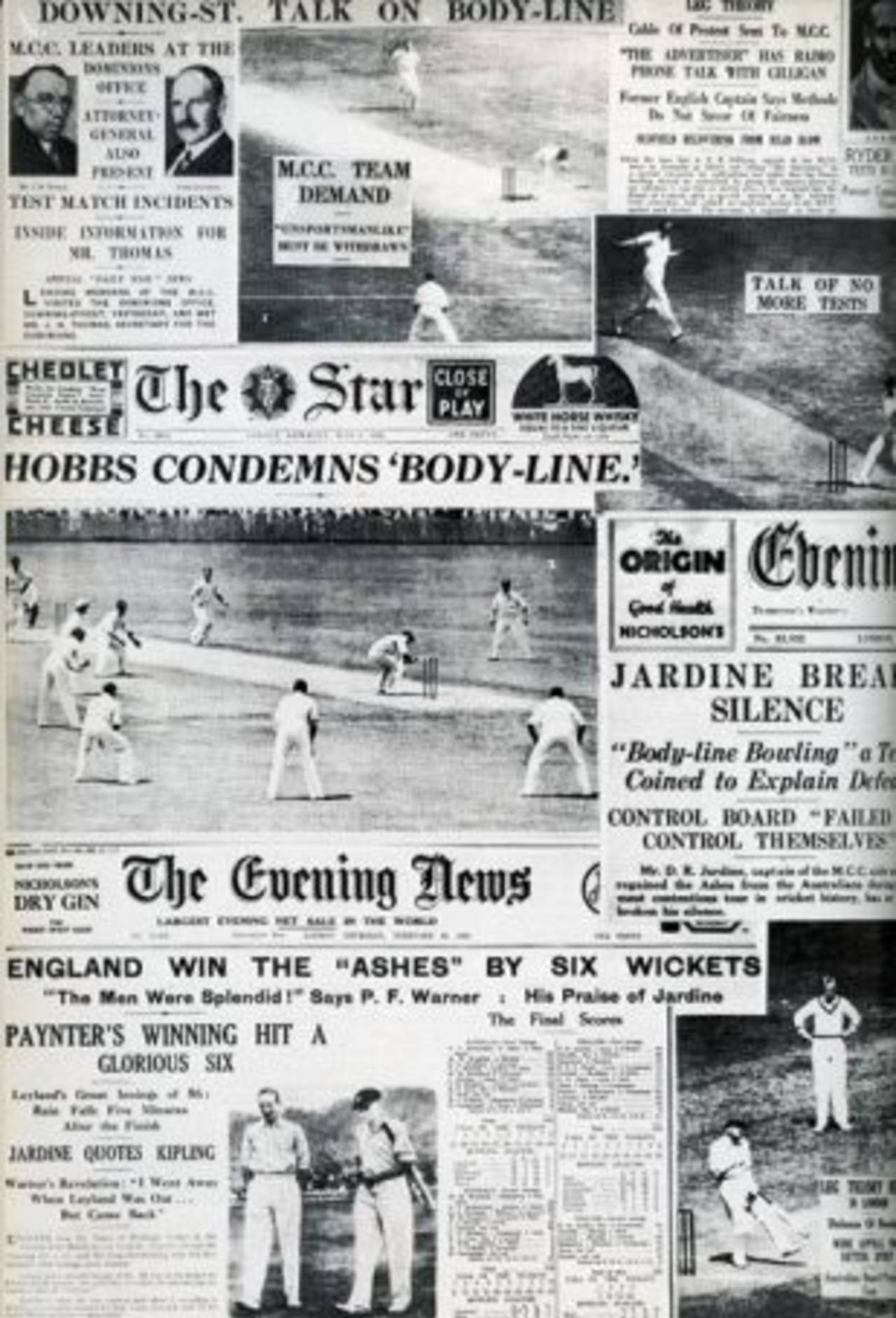Young folk may challenge the claim, but the 1932-33 series between Australia and England remains the most sensational Test series of them all. People were more easily shocked in those days. Cricket was still a fairly polite game. The code of honour was strictly and readily adhered to by everyone, so when Douglas Jardine unleashed his hostile fast attack of Harold Larwood and Bill Voce, who bowled short on and outside the line of the leg stump, there was outrage. Five or six short-leg fieldsmen waited to catch the ball from batsmen's desperate parries, with a couple of leg-side outfielders ready for the imperfect hook.
The principal target was Don Bradman, whose run-making over the previous three years had transformed the record book. "Our Don" was Australia's most treasured asset, a source of pride and a comfort to his legions of fans in desperate times of unemployment and economic hardship. England needed to subdue him. Jardine's strategy was to restrict him by means of fast Leg Theory. (This aloof and somewhat shy man scorned the Australian term "Bodyline".) And succeeded. The Don's average was cut to a mere 56, with only one century.
But the cost to England's image was catastrophic. Here was the revered Mother Country playing dirty. At that time the intimidation and the concentrated field setting were both within the letter of the Laws. But as even some of the English players privately recognised, they were contrary to the spirit of the game. The tourists won four of the Tests, losing only the second, on a slow Melbourne pitch where Bradman coupled a duck with a splendid, hardworking century.
It took a long time to heal the injured feelings, which had even concerned the governments of both countries. Subtle unwritten pledges were extracted that the Australians would not be subjected to Bodyline during the 1934 tour, and in due course the Laws were tightened in an effort to prevent any repetition - though not soon enough to spare India from assault by other England fast bowlers under Jardine's control in 1933-34.
Thereafter, bouncers were widely regarded as unsporting and unwanted - until, that is, the Second World War changed everything. In the late 1940s Bradman had Ray Lindwall and Keith Miller at his disposal, and the bouncers flew again. Yet even those blistering sessions were but an attenuated preamble to what happened in the late 1970s and the 1980s. Then, with four hefty fast bowlers at his disposal, one West Indies captain after another let them loose all day. The survivors of the original Bodyline series marvelled that there was no public riot, for it had come close to that in Adelaide in 1933, when two of Australia's batsmen were felled. Yet now, in a period of 20 years, West Indies fast men sent 40 opposing batsmen to hospital.
To repeat: our fathers and grandfathers were shocked more easily.
